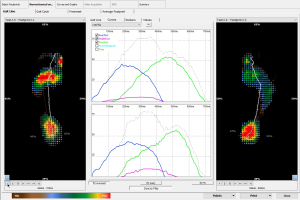Using Plantar Pressure to predict Treatment Outcomes
Elective Unit
Core Information
How do you know if a particular treatment strategy will be successful?
Just relying on the patient reporting a change in their symptoms is subjective and is not truly indicative of improved function.
We can use the clinical plantar analysis equipment to give us key information that will specifically assist us in knowing the effect of any orthotic or mechanical interventions on the patient’s function.
This Unit on Using Plantar Pressure to predict Treatment Outcomes will explain some useful interventions you can use to quickly and easily compare the baseline plantar pressure data before the intervention with the recording obtained with the intervention.
This use of plantar pressure can be used immediately during a consultation to test a possible treatment strategy or after some weeks or months of treatment to assess the patient’s progress. Case Studies are presented and suggested test interventions for:
- Stiff Plantar Flexed 1st Metatarsal
- Compensated Forefoot Supinatus
- Non-Compensated Forefoot Supinatus, and
- Suspected LLD Asymmetry
Content includes:
- 4 X video sessions + Bonus Q & A Session – around 75 minutes of content.
- Unit Worksheet
- Test questions to assist your understanding and for you to receive an Achievement Certificate at the completion of the unit.

